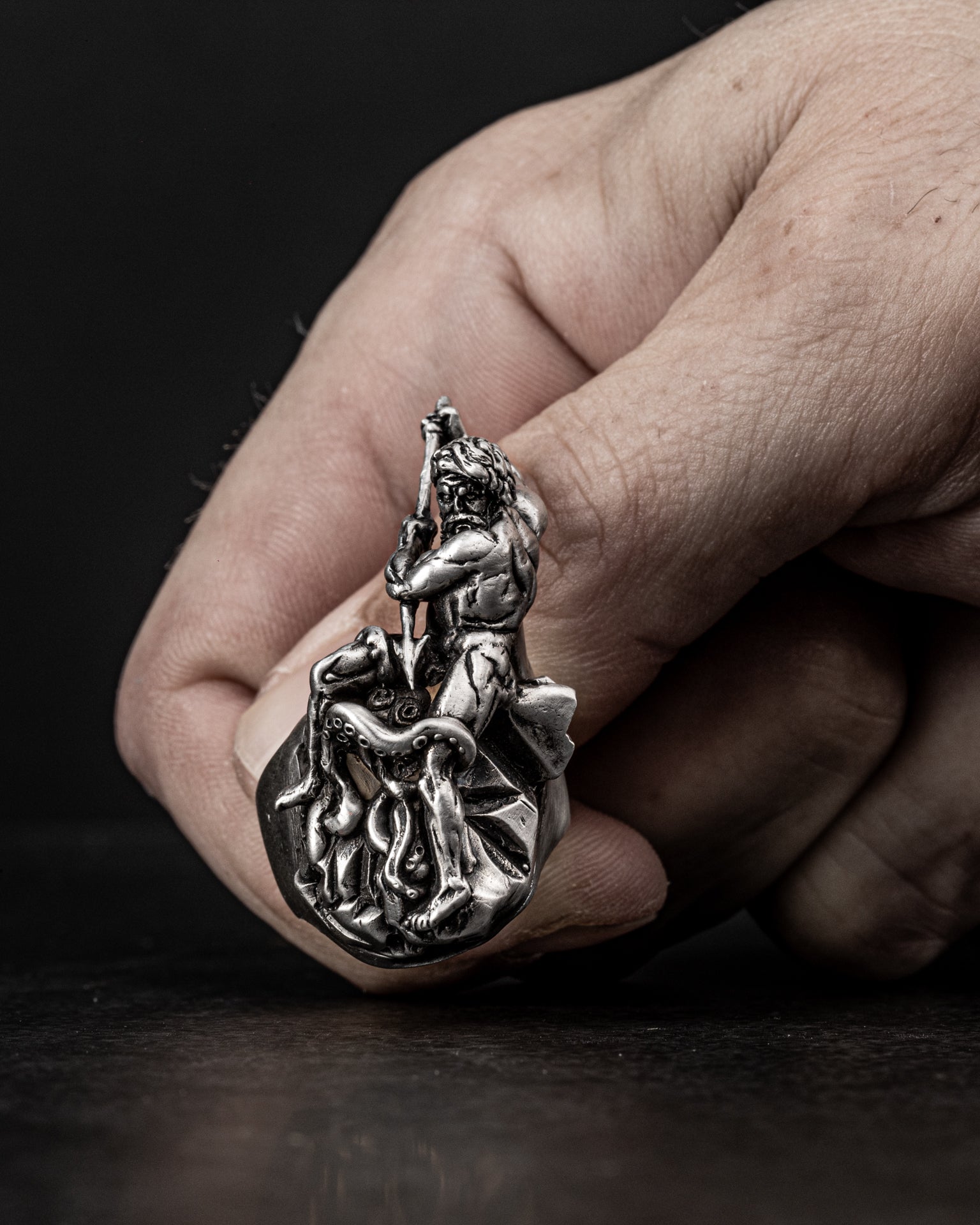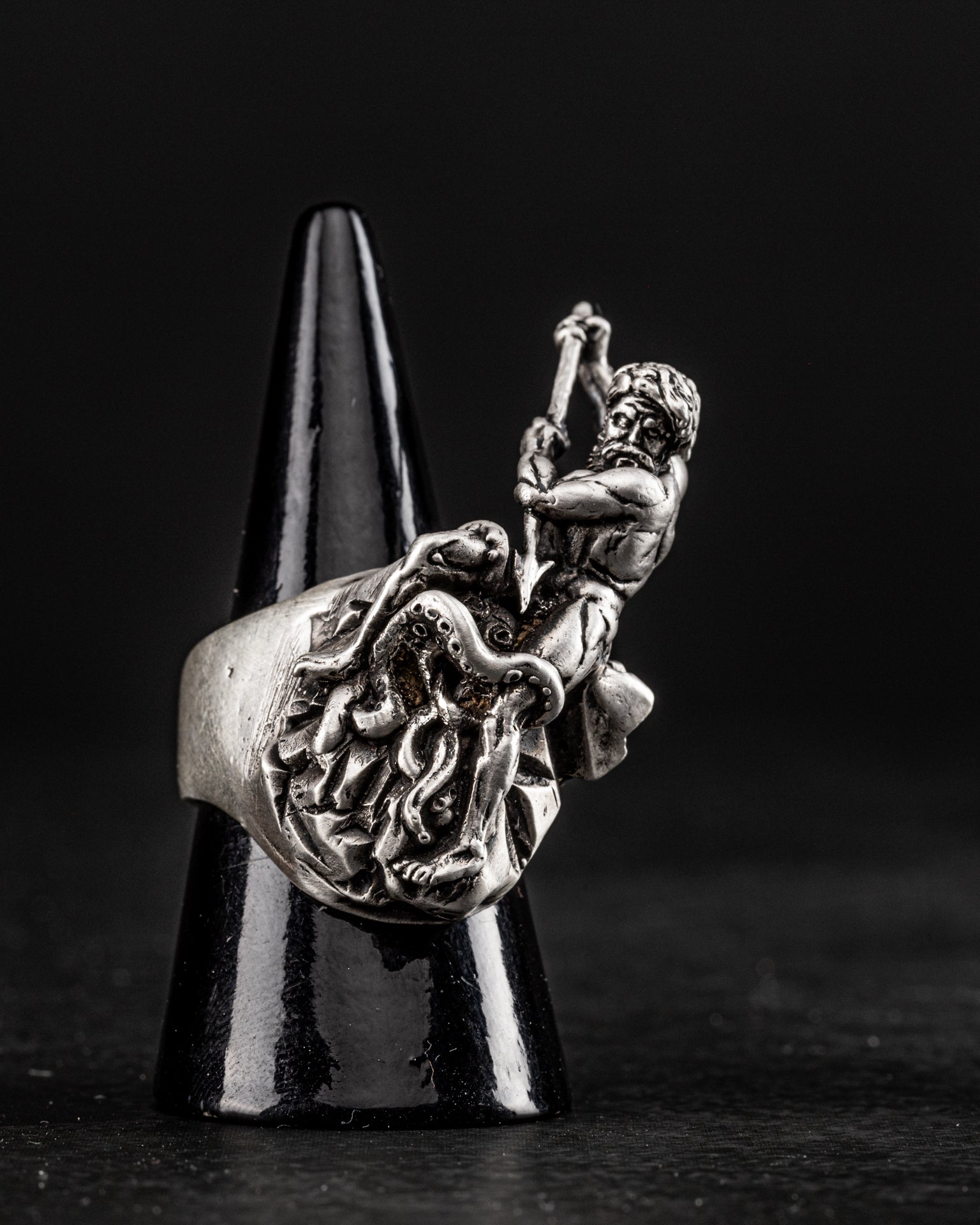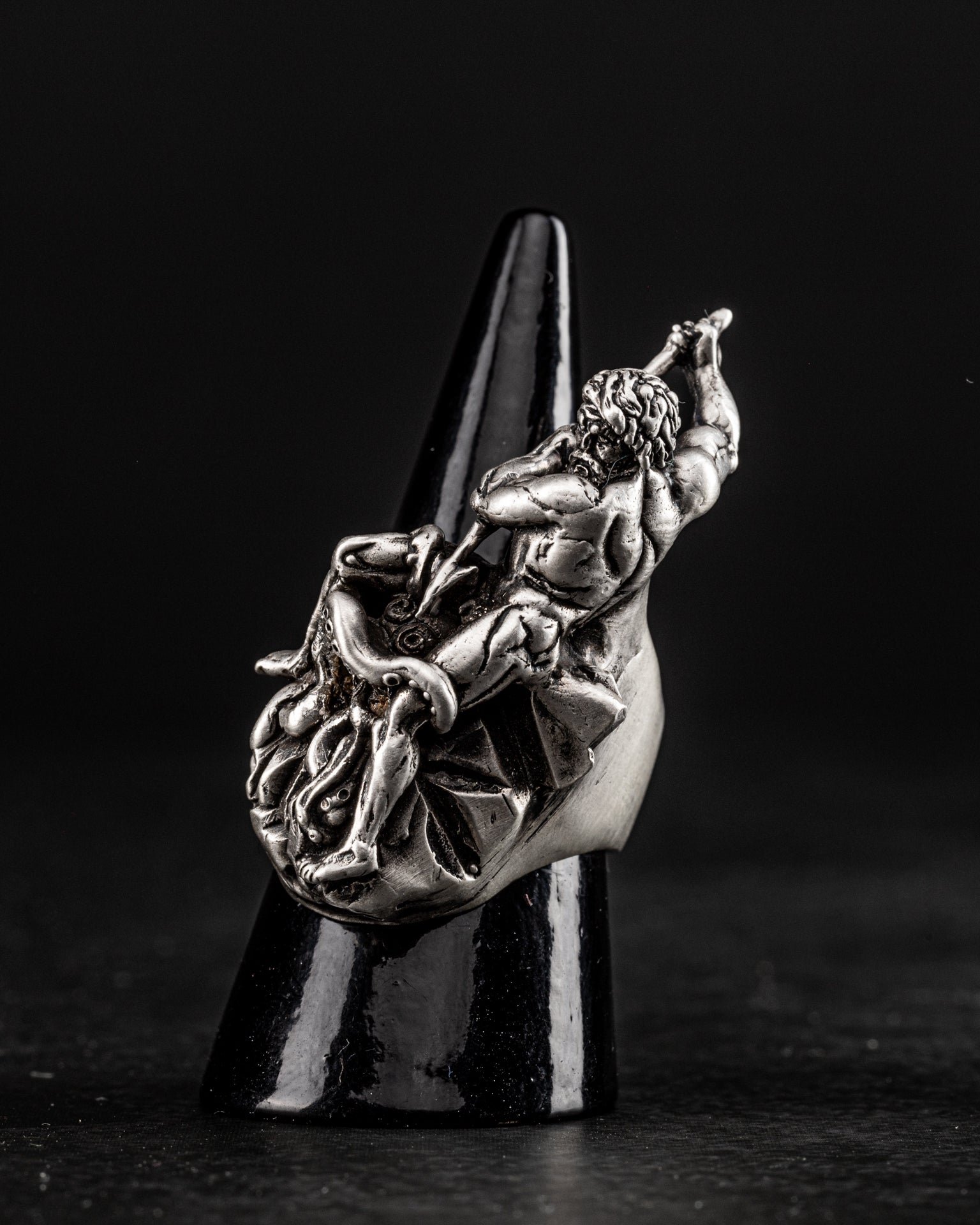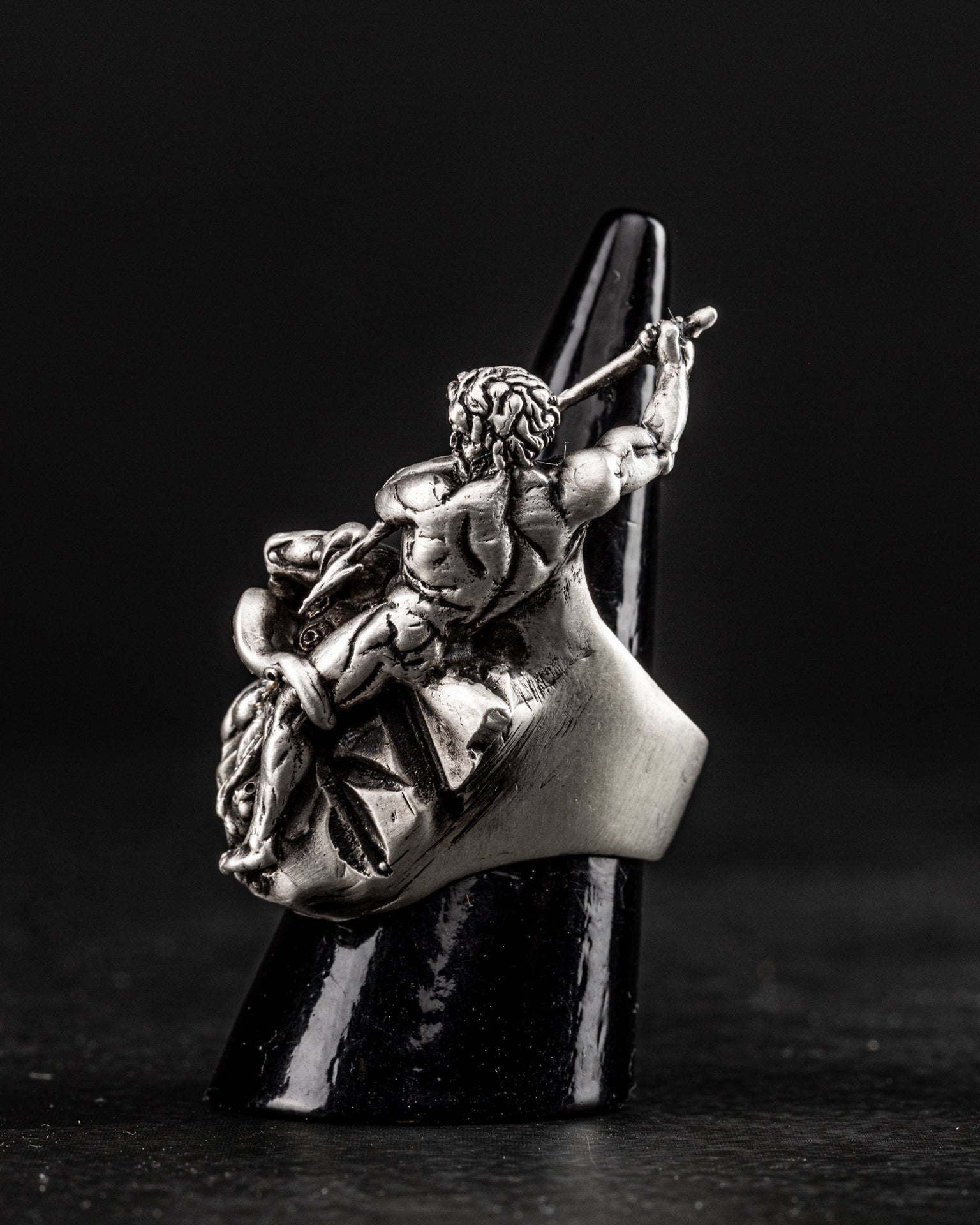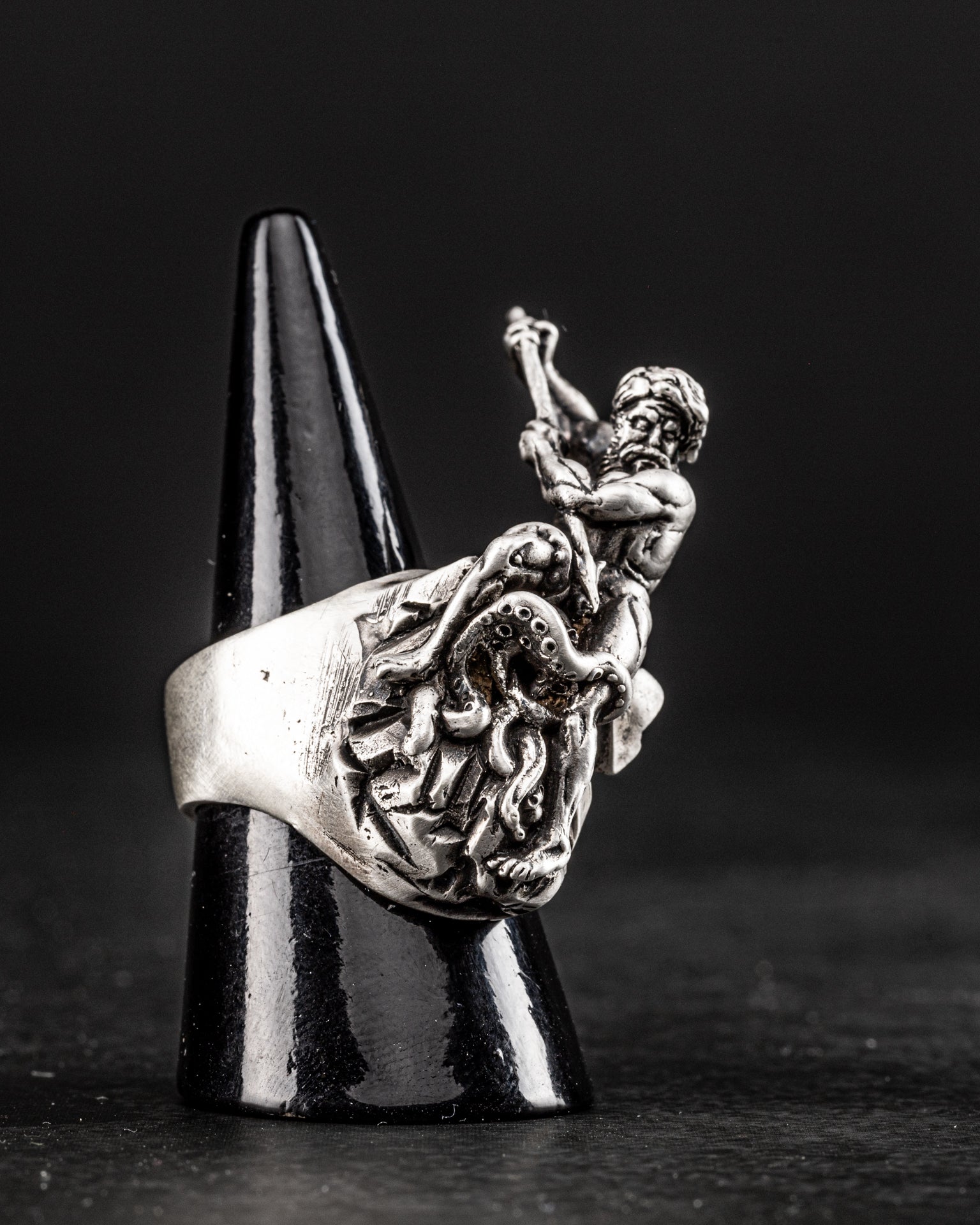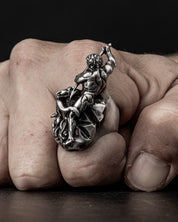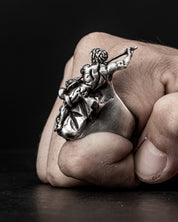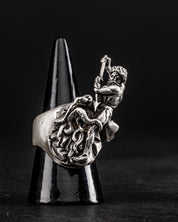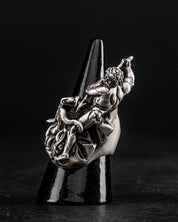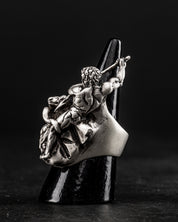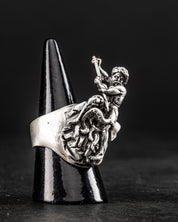Neptune
INeptune of the “Fountain of Neptune” Piazza Navona, Rome.
Immediately after the restoration of the Aqua Virgo aqueduct in 1570, work began on a secondary underground branching of the conduit, in order to reach the area of the ancient Campo Marzio, one of the most populous areas of Rome, and consequently also planned the construction of a certain number of fountains. Among the first were commissioned by Pope Gregory XIII, in 1574, to Giacomo Della Porta, the two placed at the ends of Piazza Navona (at the time “piazza in Agone”).
Della Porta's project envisaged for both a marble basin with a mixtilinear plan resting on two steps, which soon after was circumscribed by a gate [1]. The subsequent improvements, made by Della Porta himself and then, in 1651, by Bernini, concerned only the fountain of the Moor, the southern one, both due to lack of economic resources and because, in the Berninian era, the fountain on the south side of the square was located in front of the Pamphilj palace, owned by the family of the then Pope Innocent X, in which the sister-in-law and favorite of the Pope himself, Donna Olimpia Maidalchini, lived. The only intervention of a certain importance, again by Bernini (and in any case some time after the realization of the same intervention on the southern fountain), was the removal of the steps and the gate and the construction of a larger basin around the fountain, that contained the previous one, with the same mixtilinear design.
It took its current name following the addition of the two sculptural groups, Nereids with cherubs and sea horses by Gregorio Zappalà and Neptune fighting an octopus by Antonio Della Bitta, which took place following a public competition held by the Municipality of Rome in 1873 [ 2] and wanted to create a stylistic consonance with the other two fountains in Piazza Navona.


Creiamo
Armada Art nasce nel Novembre del 2014 con l’intento di produrre gioielli custom dall’alto valore artigianale.
Fin dall’inizio abbiamo voluto creare gioielleria di alto livello tecnico e di forte impatto visivo, cercando di soddisfare i nostri clienti con pezzi unici e completamente personalizzati o personalizzabili.
Ogni gioiello è al 100% fatto a mano in Italia senza l’utilizzo di stampa 3d o di stampi prodotti in serie.
Il nostro obiettivo è di produrre gioielli che vengano vissuti come vere e proprie opere d’arte da indossare.





